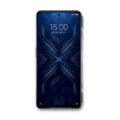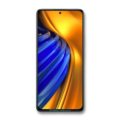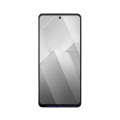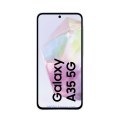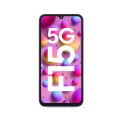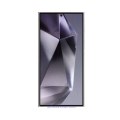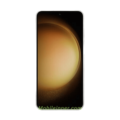- Home
- All Phones
- XIAOMI
- Xiaomi 14 Ultra
Xiaomi 14 Ultra
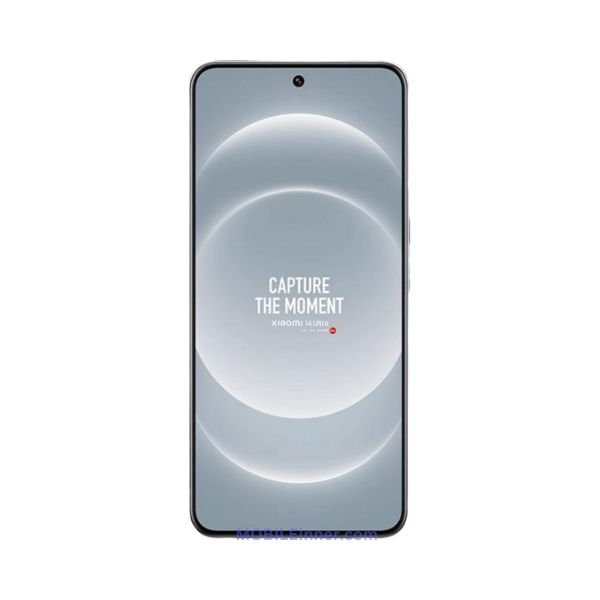



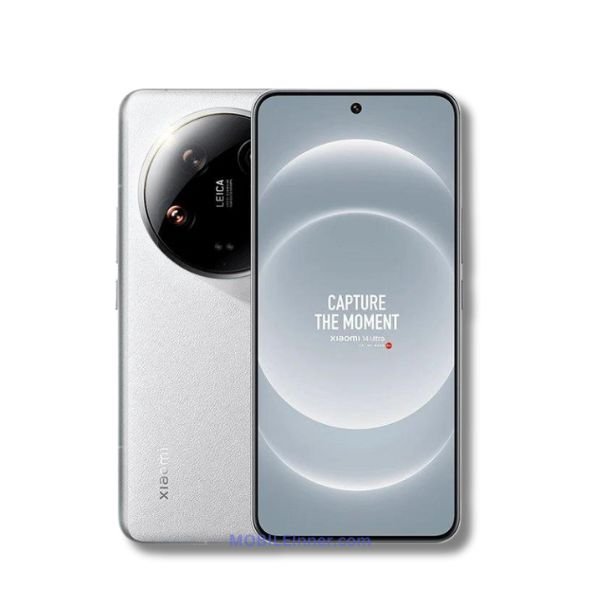
Full specification
General
| Device Type | Smart Phone |
| Released | 22, February 2024 |
Design
| Dimensions | 161.4 x 75.3 x 9.2 mm |
| Weight | 225 g |
| Build | Glass front, glass/leather back, titanium/aluminum frame |
| IP Rating | IP68 |
| Colors | Black, Blue, White, Titanium Gray |
Display
| Display Type Display Technology => A number of display technologies and types used in mobile phones => TFT (Thin Film Transistor), IPS (In-Place Switching), OLED (Organic Light Emitting Diode), AMOLED (Active-Matrix Organic Light-Emitting Diode), Super AMOLED (an even advanced version of AMOLED), Resistive Touchscreen (Resistive touchscreens contain two layer of conductive material with a very small gap between them which acts as a resistance), Capacitive Touchsceen (Capacitive touchscreen technology consists of a layer of glass coated with a transparent conductor) | LTPO AMOLED, 120Hz |
| Size | 6.73 inches |
| Resolution | WQHD+, 1440 x 3200 pixels |
| Pixel Density Pixel Density (PPI) is refers to the concentration of pixels on a particular display, measured in pixels per inch (ppi). Pixel density is calculated by dividing the diagonal pixel resolution of a display by its diagonal size, higher pixel density better display quality. | 522 ppi |
| Protection Display Protection => Gorilla Glass is a special alkali-aluminosilicate glass shield with exceptional damage resistance that helps protect mobile displays from scratches, drops, and bumps of everyday use, It is always better to go for a smartphone with Gorilla Glass for that added protection and peace of mind. | Xiaomi Longjing Glass / Shield Glass |
| Features | Dolby Vision, HDR10+, 89.6% screen-to-body ratio, 120Hz, 20:9 ratio, Hole-punch Notch, 12 Bits panel, Peak brightness - 3000 nits |
Software
| OS OS => Every computer system run on a base software called Operating System (OS). Operating System controls all basic operations of the computer (such as smartphone, PDAs, tablet computers and other handheld devices). The Operating System allows the user to install and run third party applications (apps), apps are used to add new functionality to the device. | Android 14 |
| UI UI or user interface of a device is the look and feel of the on-screen menu system. How it works, its color scheme, how it responds to button presses, all of these things are part of the user interface. | HyperOS |
Hardware
| Chipset Chipset is a group of integrated circuits designed to perform one or a more dedicated functions, often with real time computing constraints, Popular smartphones are equipped with more advanced embedded chipsets that can do many different tasks depending on their programming. | Qualcomm SM8650-AB Snapdragon 8 Gen 3 (4 nm) |
| CPU CPU (Central Processing Unit) mostly known as processors, CPU processes instructions in order to carry out certain functions that make your device operate properly. Processors are often described as the brain of computers, smartphones and tablets, Smartphones and tablets rely on processors to carry out their every task, Processors are an incredibly important factor in selecting any type of computing device, including your smartphone. | 8-core (1x Cortex-X4 • 3.3 GHz + 3x Cortex-A720 • 3.2 GHz + 2x Cortex-A720 • 3.0 GHz + 2x Cortex-A520 • 2.3 GHz) |
| GPU GPU (Graphics Processing Unit) is a single-chip processor designed to rapidly manipulate and alter memory to accelerate the creation of images in a frame buffer intended for output to a display, This includes things such as lighting effects, object transformations, and 3D motion. | Adreno 750 |
Memory
| Card Slot Memory Card Slot is a special slot for inserting a memory card. Memory cards allow you to expand the phone's built-in memory, A memory card (sometimes called a flash memory card or a storage card) is a small storage medium used to store data such as text, pictures, audio, and video, for use on small, portable or remote computing devices such as mobile phones, mp3 players, digital cameras. | No |
| RAM RAM (Random Access Memory) is a type of computer memory that can be accessed randomly, any byte of memory can be accessed without touching the preceding bytes that allows information to be stored and accessed quickly from random locations. RAM is the most common type of memory found in computer systems, smartphones, tablets and other electronic devices. | 12 GB, 16 GB |
| RAM Type | LPDDR5X |
| ROM Internal Storage is a data storage space (flash memory) mostly used in smartphones, tablets and other electronic devices where operating system, apps, music, photos, videos, files and other user data Is stored. | 256GB, 512GB, 1TB |
| Type Design Type called form factor refers to a mobile phone's size, shape, and style as well as the layout and position of major components of phone. There are three major form factors seen in mobile phones => bar phones, folding phones and sliding phones. | UFS 4.0 |
| Variants | 256GB 12GB RAM, 512GB 16GB RAM, 1TB 16GB RAM |
Camera
| Primary Camera is able to capture photographs and usually videos, The most important characteristics of a camera are the resolution (measured in megapixels), lens focus type (fixed or automatic), higher megapixel cameras are known to capture higher quality photos, but not always a good measurement of the photos quality. |
Quad Camera 50 MP, f/1.6 or f/4.0, 23mm (wide), multi-directional PDAF, Laser AF, OIS, (Sensor - Sony LYT-900, Sensor size - 1.0, Pixel size - 1.6µm) 50 MP, f/1.8, 75mm (telephoto), dual pixel PDAF (10cm - ∞), OIS, 3.2x optical zoom, (Sensor - Sony IMX858, Sensor size - 1/2.51, Pixel size - 0.7µm) 50 MP, f/2.5, 120mm (periscope telephoto), dual pixel PDAF (30cm - ∞), OIS, 5x optical zoom, (Sensor - Sony IMX858, Sensor size - 1/2.51, Pixel size - 0.7µm) 50 MP, f/1.8, 12mm, 122˚ (ultrawide), dual pixel PDAF TOF 3D, (depth), (Sensor - Sony IMX858, Sensor size - 1/2.51, Pixel size - 0.7µm) |
| Video |
8K@24/30fps, 4K@24/30/60/120fps, 1080p@30/60/120/240/480 /960/1920fps, gyro-EIS, Dolby Vision HDR 10-bit rec. (4K@60fps, 1080p) |
| Features | Leica lenses, Dual-LED flash, HDR, panorama, 67mm filter ring holder (optional) |
| Selfie | 32 MP, f/2.0, 22mm (wide), (Sensor - Omnivision OV32B, Sensor size - 1/3.14, Pixel size - 0.7µm) |
| Video | 4K@30/60fps, 1080p@30/60fps, gyro-EIS |
| Features | HDR, panorama |
Media
| FM Radio | No |
| Loudspeaker | Yes, Stereo speakers |
| 3.5mm Jack | No |
| Alert Types | Vibration & Ringtone |
Connectivity
| Bluetooth Bluetooth is a wireless communications technology for exchanging data between mobile phones, headsets, computers and other network devices over short distances without wires, Bluetooth technology was primarily designed to support simple wireless networking of personal consumer devices. | 5.4, A2DP, LE, APT-x HD, APT-x Adaptive, LHDC |
| Wi-fi Wi-Fi is a popular wireless networking technology using radio waves to provide high-speed network connections that allows devices to communicate without cords or cables, Wi-Fi is increasingly becoming the preferred mode of internet connectivity all over the world. | Wi-Fi Direct, Wi-Fi 802.11 a/b/g/n/ac/6e/7, tri-band |
| Wi-fi Hotspot | |
| USB | USB Type-C 3.2 Gen 2, DisplayPort, OTG |
| GPS GPS The Global Positioning System is a satellite-based radio navigation system, GPS permits users to determine their position, velocity and the time 24 hours a day, in all weather, anywhere in the world, In order to locate your position, your device or GPS receiver must have a clear view of the sky. | Yes- GPS (L1+L5), GLONASS (L1), BDS (B1I+B1c+B2a), GALILEO (E1+E5a), QZSS (L1+L5), NavIC (L5) |
| NFC NFC (Near field communication) is a set of standards for smartphones and similar devices to establish peer-to-peer radio communications with each other by touching them together or bringing them into proximity, usually no more than a few inches. | |
| Infrared Infrared connectivity is an old wireless technology used to connect two electronic devices. It uses a beam of infrared light to transmit information and so requires direct line of sight and operates only at close range. |
Features
| Sensors Sensors are electronic components that detects and responds to some type of input from the physical environment. The specific input could be light, heat, motion, moisture, pressure and location, The output is generally a signal that is converted to use in computing systems, a location sensor, such as a GPS receiver is able to detect current location of your electronic device. | Fingerprint (under display, optical), accelerometer, proximity, gyro, compass, color spectrum, barometer, Two-way satellite communication |
Network
| Technology | GSM / CDMA / HSPA / EVDO / LTE / 5G |
| 2G Network | GSM 850 / 900 / 1800 / 1900 CDMA 800 / 1900 |
| 3G Network | HSDPA 800 / 850 / 900 / 1700(AWS) / 1900 / 2100 CDMA2000 1xEV-DO |
| 4G Network |
B1, 2, 3, 4, 5, 7, 8, 18, 19, 20, 26, 28, 38, 40, 41, 42, 48, 66 - International B1, 3, 4, 5, 7, 8, 18, 19, 26, 28, 34, 38, 39, 40, 41, 42, 48, 66 - China |
| 5G Network |
n1, 2, 3, 5, 7, 8, 20, 28, 38, 40, 41, 48, 66, 77, 78, 79 SA/NSA - International n1, 3, 5, 7, 8, 28, 38, 40, 41, 48, 66, 77, 78, 79 SA/NSA - China |
| SIM SIM (Subscriber Identity Module) is a small card that contains mobile network subscriber's account information. This allows the phone using the card to attach to a mobile network. The SIM card is most commonly associated with GSM and UMTS mobile networks. Moving a SIM card from one phone to another allows a subscriber to switch mobile phones without having to contact their mobile network carrier. SIM cards can also be used by a phone to store limited amounts of data, such as phone numbers and text messages. | Nano SIM |
| Dual SIM | Yes - Dual stand-by |
| Speed | HSPA 42.2/5.76 Mbps, LTE-A, 5G |
Battery
| Battery Type Battery Type => Cell phones run on various kinds of batteries depending on the manufacturer, phone size or shape and features. There are basically four types of cell phone batteries => Lithium Polymer, Lithium Ion, Nickel Metal Hydride and Nickel Cadmium. | Li-Ion (Lithium Ion) |
| Capacity Battery Capacity is a measure (typically in Amp-hr) of the charge stored by the battery, and is determined by the mass of active material contained in the battery. The battery capacity represents the maximum amount of energy that can be extracted from the battery under certain conditions. |
5000 mAh, non-removable - International 5300 mAh, non-removable - China only |
| Charging | 90W wired, PD3.0, QC4, Fast charging |
| Wireless Wireless Charging (Inductive Charging) uses an electromagnetic field to transfer energy between two objects. This is usually done with a charging station. Energy is sent through an inductive coupling to an electrical device, which can then use that energy to charge batteries or run the device. |
80W wireless, Fast charging 10W reverse wireless |
| Placement | Non removable |
| Standby Standby Time is the total amount of time that you can leave your is fully charged, turned on and ready to send and receive calls or data transmissions before completely discharging the battery. | NA |
Xiaomi 14 Ultra Overview
Xiaomi 14 Ultra is a camera-centric flagship smartphone.
Impressive Display
The Xiaomi 14 Ultra features a large 6.73-inch LTPO AMOLED display with WQHD+ resolution and a high refresh rate of 120Hz, providing an immersive viewing experience with vibrant colours and smooth animations.
Powerful Performance
Equipped with the Qualcomm Snapdragon 8 Gen 3 chipset and up to 16GB of RAM, the Xiaomi 14 Ultra delivers exceptional performance, allowing for smooth multitasking, gaming, and productivity tasks.
Versatile Camera System
The quad-camera setup on the rear, including 50MP wide, telephoto, periscope telephoto, and ultrawide lenses, along with advanced features like 8K video recording and Leica lenses, offers versatile photography and videography capabilities.
Long-lasting Battery
With a substantial battery capacity of 5000mAh (5300mAh for the China variant) and support for fast wired and wireless charging, the Xiaomi 14 Ultra ensures long hours of usage without frequent recharging.
Premium Build Quality
Featuring a glass front, glass or leather back, and titanium or aluminum frame, the Xiaomi 14 Ultra boasts a premium build quality that enhances its aesthetics and durability. The IP68 rating makes the Xiaomi 14 Ultra resistant to water and dust, providing added durability and peace of mind for users in various environments.
Xiaomi 14 Ultra Pros and Cons
Let’s delve into the pros and cons of what the Xiaomi 14 Ultra offers potential users.
Xiaomi 14 Ultra FAQ
Here, you can see most asked questions about Xiaomi 14 ultra
What is the display size and resolution of the Xiaomi 14 Ultra?
The Xiaomi 14 Ultra features a 6.73-inch LTPO AMOLED, 120Hz display with a WQHD+ resolution of 1440 x 3200 pixels and 522 ppi.
Does the Xiaomi 14 Ultra have water and dust resistance?
Yes, the Xiaomi 14 Ultra is IP68 rated, providing both water and dust resistance.
How many cameras does the Xiaomi 14 Ultra have?
The Xiaomi 14 Ultra boasts a quad-camera setup on the rear and a single front-facing camera for selfies.
What are the storage and RAM options available for the Xiaomi 14 Ultra?
The Xiaomi 14 Ultra comes in three variants: 256GB storage with 12GB RAM, 512GB storage with 16GB RAM, and 1TB storage with 16GB RAM. It utilizes LPDDR5X RAM and UFS 4.0 storage technology.
What is the chipset and GPU powering the Xiaomi 14 Ultra?
The Xiaomi 14 Ultra is powered by the Qualcomm SM8650-AB Snapdragon 8 Gen 3 (4 nm) chipset, coupled with an Adreno 750 GPU.
What is the battery capacity of the Xiaomi 14 Ultra?
The Xiaomi 14 Ultra is fueled by a non-removable Li-Ion battery with a capacity of 5000 mAh (5300 mAh for China variant).
What are the charging options available for the Xiaomi 14 Ultra?
The Xiaomi 14 Ultra supports 90W wired fast charging, 80W wireless fast charging, and 10W reverse wireless charging.
Does the Xiaomi 14 Ultra support dual SIM cards?
Yes, the Xiaomi 14 Ultra features dual SIM support with dual standby capability.
What are the available color options for the Xiaomi 14 Ultra?
The Xiaomi 14 Ultra comes in Black, Blue, White, and Titanium Gray color variants.
User Reviews
Disclaimer Note
We cannot guarantee that the information on this page is entirely 100% accurate.


